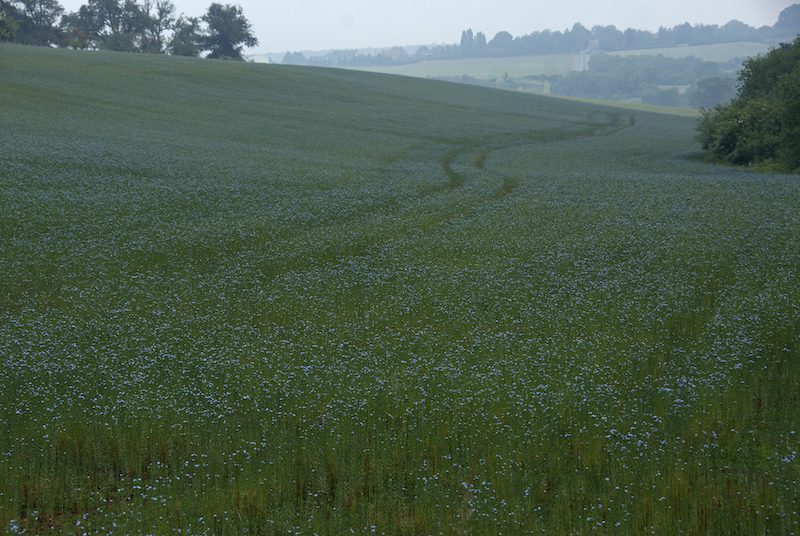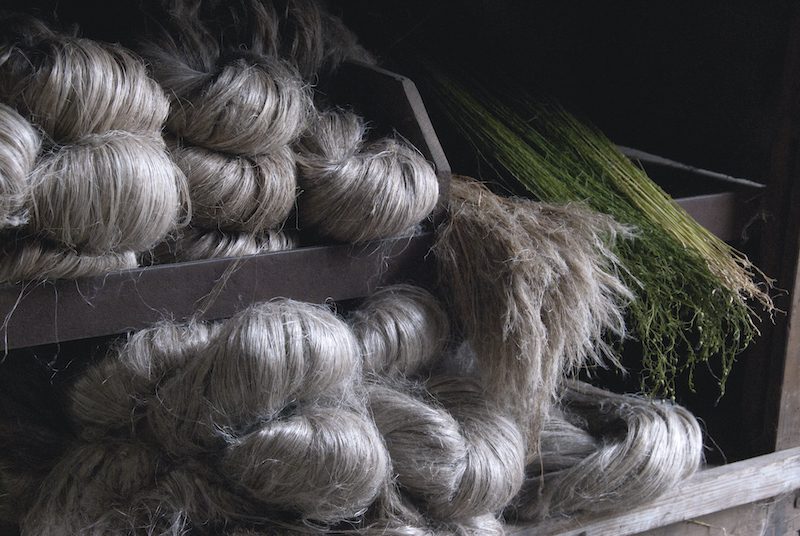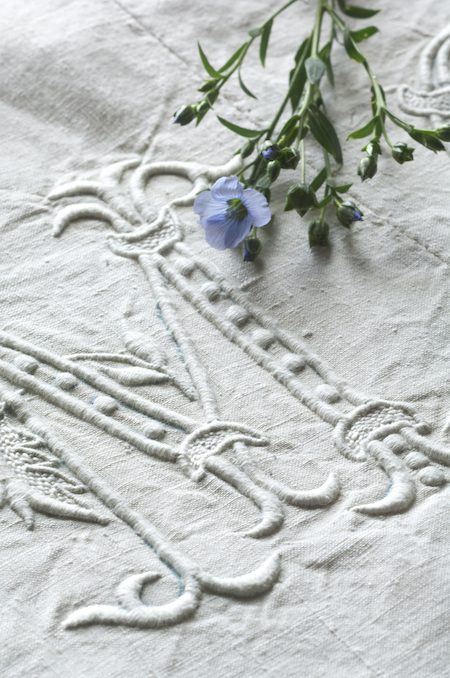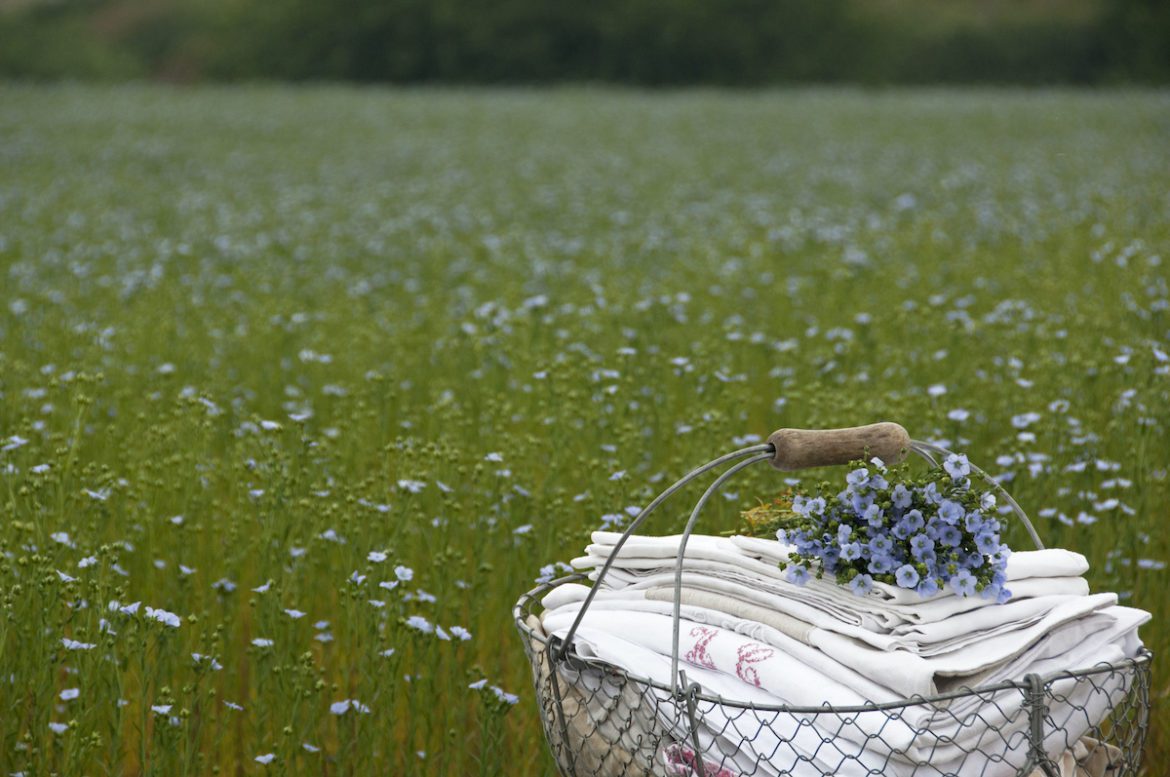Linen has long been grown in the rolling fields of Normandy, in the north western corner of France. The region is famed for producing this noble fiber with its long stems, incredible strength and desirable hue, the hallmark of fine quality linen. But what does this generations-old process entail? Come with us as we investigate the fascinating story of how linen is made.
SUBSCRIBE TO THE MAGAZINE
Linen and the Normandy Region
A combination of good earth, climate and generations of skilled expertise render Normandy linens amongst the best in the world. Crops continue to be grown here and transformed into coveted fibers and are then typically exported for weaving and manufacture. However, the long tradition of linen production and manufacture of household linens and garments goes back centuries and the area is rich in beautiful vintage, often monogrammed linens which can be found in antique stores and markets across not only this region but throughout France.
Summertime Blues
In early summer, during the month of June, a haze of delicate lilac-blue flowers cloud the countryside fields as the linen plant, Linum usitatissimum, flowers. Its blooms are fleeting, each blue flower lasts but a day, before being swiftly replaced with the next. The flowers resemble tiny campanulas, fragile flowers on deceptively sturdy, tall stems within which the linen fiber is concealed.

Working the Fields
Between mid-March and mid-April, vast rolling fields, the soil tilled to perfection, are intensively sown with tiny linen seeds, around 2,000 per m2. Within two to two and a half months, depending on the weather conditions, the linen crop flourishes, its tall, grass-like stems sashay in the summer’s breeze. The experienced linen farmers patiently leave stems to strengthen and grow taller, over a meter or more, the longest stems yield the best linen fibers. The crop is left until it has set seed, for this will perpetuate the plant’s life cycle and ensure the farmer’s subsequent quality linen crop. Only then is it cut. Once done by hand, cutting is now mechanized with work beginning in July. Swathes of linen are cut and the stems laid in rows across the field to dry. The drier the crop the easier it is to handle and extract the precious fibers within. Rolled and gathered into great hay-like bales, the linen, now desiccated, is hauled off to the factory for processing.
Read next: How to care for antique French linen
How Is Linen Made?
Linen is both an economic and eco-friendly crop, little goes to waste. One by one huge bales of the raw material are unraveled and spread out on a long conveyor belt. First the seed is removed and collected. Seed for next year’s crop is reserved and excess seed, rich in omega 3, is sold as an ingredient for chicken-feed. Next, the stems are shattered, a scutching machine breaks the brittle stems outer sheath to expose the linen fibers inside.
The broken chaff is shaved away and the revered silky linen fibers are revealed. The longest fibers represent higher grade linen, shorter fibers are low grade and are often used to make cigarette paper or as the base material for US dollars (which makes them resilient and strong!). The silken, flax-colored fibers are combed and spun to produce long, fine silky but strong natural fiber. The quality fibers are recognized by their long, pale staples, ash blond rather than the cheaper brasher yellower blonds of lesser linens. Resultant fabrics are clear, crisp and bright, long staples bring strength and durability. The quality of the ponytail-like hanks is evaluated by traders before they bulk buy and ship across the world for weaving. Whilst it is no longer economical to produce the actual linen fabric in France, it remains the center of excellence for quality linen fibers.

Turning Them Into Linens
As a historic center of excellence for linen production, it is not surprising that Normandy also became known for linen fabric and hand workmanship. Initially used as an everyday fabric, sheets, garments, and other household items, they were often embroidered or monogrammed, emblazoned with family initials. Many of these treasured vestiges can still be discovered at brocantes and flea markets across the country. While natural ‘linen’ shades are dominant, there are also many examples of natural dyed linens, like the madder-blue shade for workwear clothes. Time-worn and loved, even patched and mended pieces are treasured and larger pieces can be creatively transformed into drapes, furnishing covers, cushions, tablecloths and napkins, bringing a little bit of history into our everyday lives.

This article was originally published in the May/June 2019 issue of My French Country Home.
Photography by Michelle Garrett – Text by Jacky Hobbs

